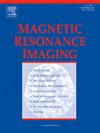从磁共振成像造影剂中析出的钆可能是毒性的黄铜钉。
IF 2.1
4区 医学
Q2 RADIOLOGY, NUCLEAR MEDICINE & MEDICAL IMAGING
引用次数: 0
摘要
静脉磁共振成像造影剂在多个组织中形成富钆纳米颗粒可能是稀土金属病的第一步。钆诱发疾病的机制尚不清楚,这些具有特征的纳米颗粒是如何形成的。所有磁共振成像造影剂品牌均可观察到钆沉积。除了内源性金属和酸性条件外,很少有人关注生物环境在磁共振成像造影剂降解成纳米颗粒中的作用。在这里,我们描述了商用磁共振成像造影剂Omniscan和Dotarem在草酸(一种众所周知的内源性化合物)存在下的分解。Omniscan通过现有的方法快速脱羧并预先测量,而Dotarem则经历两步分解过程。两种磁共振成像造影剂经草酸分解生成草酸钆(Gd2[C2O4]3, Gd2Ox3)。此外,所观察到的多塔雷姆反应的两个步骤都涉及草酸的结合加成。添加蛋白(牛血清白蛋白)可提高脱羧率。在溶酶体ph处可能发生位移反应。通过这些研究,我们已经证明磁共振成像造影剂可以被内源性分子解离,从而说明了钆基造影剂(gbca)可能在体内不稳定的一个指标。本文章由计算机程序翻译,如有差异,请以英文原文为准。
Precipitation of gadolinium from magnetic resonance imaging contrast agents may be the Brass tacks of toxicity
The formation of gadolinium-rich nanoparticles in multiple tissues from intravenous magnetic resonance imaging contrast agents may be the initial step in rare earth metallosis. The mechanism of gadolinium-induced diseases is poorly understood, as is how these characteristic nanoparticles are formed. Gadolinium deposition has been observed with all magnetic resonance imaging contrast agent brands. Aside from endogenous metals and acidic conditions, little attention has been paid to the role of the biological milieu in the degradation of magnetic resonance imaging contrast agents into nanoparticles. Herein, we describe the decomposition of the commercial magnetic resonance imaging contrast agents Omniscan and Dotarem in the presence of oxalic acid, a well-known endogenous compound. Omniscan dechelated rapidly and preluded measurement by the means available, while Dotarem underwent a two-step decomposition process. The decomposition of both magnetic resonance imaging contrast agents by oxalic acid formed gadolinium oxalate (Gd2[C2O4]3, Gd2Ox3). Furthermore, both observed steps of the Dotarem reaction involved the associative addition of oxalic acid. Adding protein (bovine serum albumin) increased the rate of dechelation. Displacement reactions could occur at lysosomal pH. Through these studies, we have demonstrated that magnetic resonance imaging contrast agents can be dissociated by endogenous molecules, thus illustrating a metric by which gadolinium-based contrast agents (GBCAs) might be destabilized in vivo.
求助全文
通过发布文献求助,成功后即可免费获取论文全文。
去求助
来源期刊

Magnetic resonance imaging
医学-核医学
CiteScore
4.70
自引率
4.00%
发文量
194
审稿时长
83 days
期刊介绍:
Magnetic Resonance Imaging (MRI) is the first international multidisciplinary journal encompassing physical, life, and clinical science investigations as they relate to the development and use of magnetic resonance imaging. MRI is dedicated to both basic research, technological innovation and applications, providing a single forum for communication among radiologists, physicists, chemists, biochemists, biologists, engineers, internists, pathologists, physiologists, computer scientists, and mathematicians.
 求助内容:
求助内容: 应助结果提醒方式:
应助结果提醒方式:


